The top 10 agriculture trends of the next decade
Agriculture is facing a decade of significant change. From smart livestock tags and virtual fencing to circular and soil-free farming, here are the top 10 farm trends of the next 10 years.
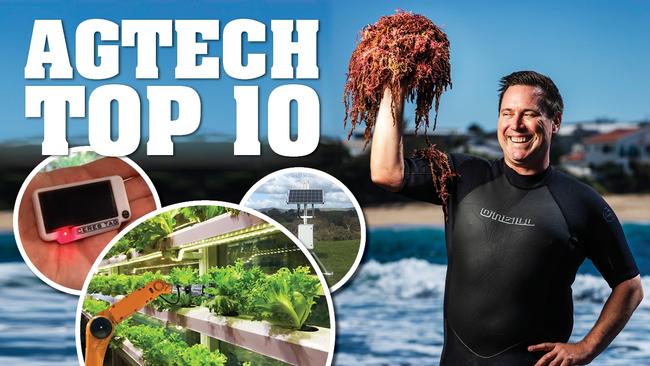
AGTECH DEVELOPMENTS
Smart interactive livestock eartags

The Ceres Tag will be released in Queensland next May, aimed squarely at large outback cattle stations.
The Ceres Tag is the world’s only direct-to-satellite smart geo-location eartag, which is effectively a unique animal monitoring sensor, GPS individual stock tracker and locator and global traceability ID tag rolled into one.
Costing about $100 each it is no cheap investment, but CEO David Smith says 8000 tags have already been ordered from cattle producers in eight countries including Australia.
Some operators want the tag to reduce helicopter mustering and fuel costs on outback stations by ensuring a clean quick roundup, while other producers like the Ceres Tag’s link with the E-Grazor app, offering data feedback on every animal’s pasture feeding efficiency, paddock location, daily movements and even greenhouse gas emissions. Preventing stock theft, particularly now cattle are worth up to $2500 a head, is another bonus.
MORE: www.cerestag.com
Virtual fencing and eShepherd
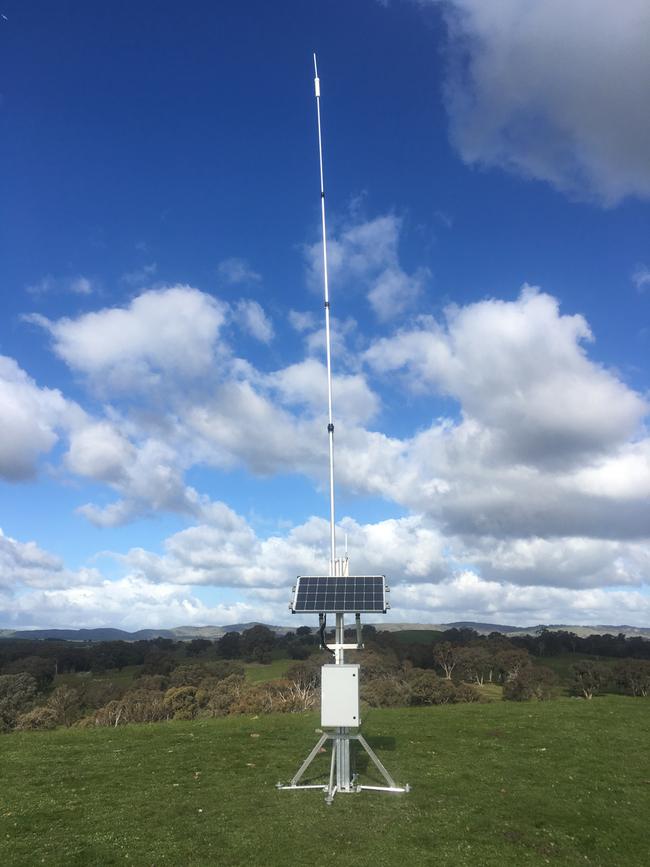
It’s been a long time in the making but the ability to do away with expensive wire, steel post and timber fences and instead use modern technology in the shape of virtual fence “lines” drawn on farm maps on iPads, linked to electronic neck bands on cattle has finally arrived. Marketed by Agersens as a “game changer for the livestock industry”, eShepherd is described as a “revolutionary livestock management system providing fingertip control of pastoral assets, paddock rotations and livestock movements”.
The 2kg, solar-powered neck bands will be commercially released in Queensland next year. Each neck band, which will cost a hefty $350, enables farmers to both contain cattle in “virtual” borderless paddocks or grazing cells, or to slowly move stock along an invisible route at the rate of about 1km every 6-12 hours, without the need for expensive fences or laneways.
The collars are linked to farm computers via a special farm-located 3G or 4G base station, with cattle first hearing an audio signal or buzz from their collar when they approach close to the virtual fence, and then receiving a slight electric pulse if they continue towards and “touch” the e-fence. Benefits of eShepherd are biggest for the largest cattle stations, saving on the cost of building new fences, and increasing pasture utilisation by dividing vast outback paddocks into smaller virtual cells, but still linked to a central watering point.
MORE: www.agersens.com
BioGenetics

Breeding better cattle, sheep or crops with the most favourable and productive characteristics to suit an individual farm, region or end food demand using traditional methods can take many generations of crossbreeding and decades of selection of natural variation.
But modern genomics, including the delicate gene editing, speeds up the selection process within one generation by allowing specific genes in the DNA of an animal or plant to be edited or switched on and off in the laboratory.
A US gene technology company has already developed a line of polled cattle using gene editing, without negatively affecting other production traits, while other gene editing work has selected animals that are more tolerant of heat or have foot-and-mouth disease resistance, and crops that are tolerant of weed-killing herbicides.
In Canberra, CSIRO plant breeders may have cracked the genomic code to producing naturally-coloured cotton, using gene editing to grow cotton that is coloured not bright white, but yellow, dark purple and even black.
The cotton industry is keen to build on its reputation as growing a renewable, recyclable and natural fibre, reducing the need to use chemical dyes.
In Melbourne, Animal genetics professor at La Trobe University, Jennie Pryce, was recently named as Australia’s top animal researcher for her genomic selection work in increasing the feeding efficiency and heat tolerance of dairy cows and is now looking at using genomic selection to breed environmentally friendly cattle that have much lower methane gas emissions in their farts and burps.
FutureFeed
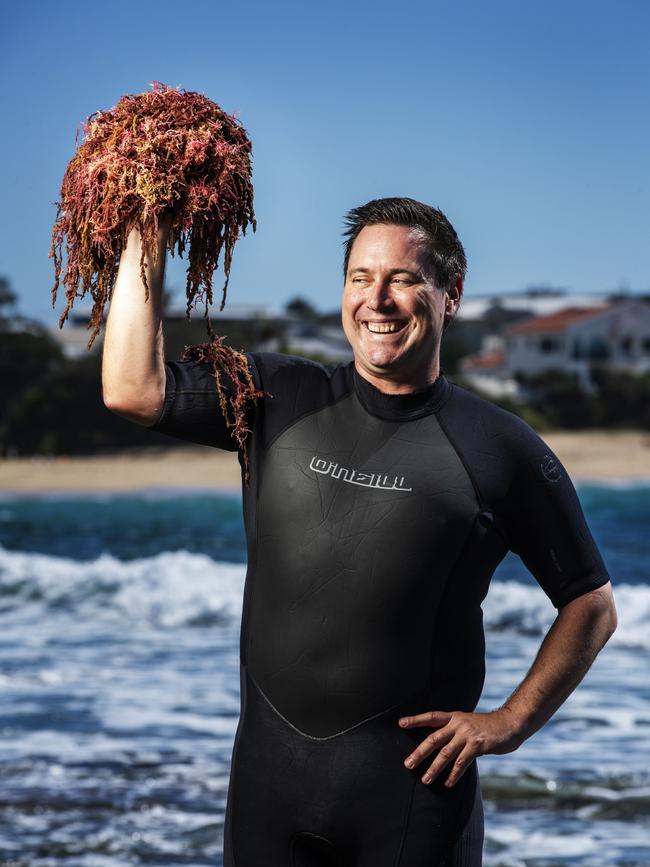
Much hoopla has surrounded the $15 million plunge by major joint venture investors including Woolworths, GrainCorp and Andrew “Twiggy” Forrest into backing the CSIRO-developed FutureFeed supplement, made from the red seaweed asparagopsis.
Adding FutureFeed as a feed additive to cattle reduces harmful methane gases emitted by livestock by as much as 65-75 per cent, opening the way for cattle to be more efficient converters of grass to meat, and also farmers using the supplement to receive cash payments from the Emission Reduction Fund for contributing to Australia’s climate change targets for reduced greenhouse gas emissions.
CSIRO research shows cows fed 1 per cent of their daily intake as red asparagopsis achieve the emission benefits, with its application immediately apparent for beef cattle housed in intensive feedlots, or daily-milked dairy cows.
MORE: research.csiro.au/futurefeed/
The Yield and Internet of Things
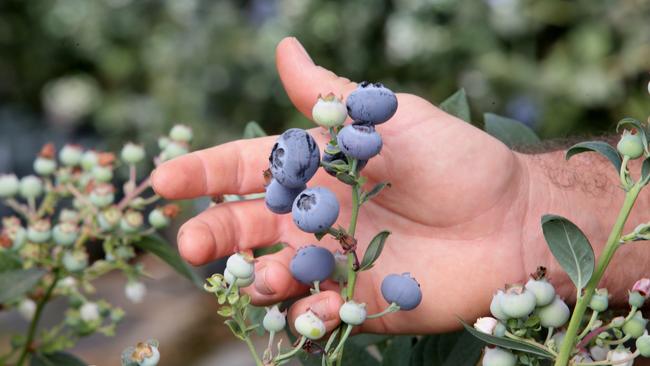
The Yield, the $29 million sensoring company that started from small beginnings in Tasmania six years ago is now a global leader in microclimate sensoring, monitoring and “hyper-local” weather predicting and analytics to the high-value horticultural sector using artificial intelligence.
All of giant Costa Group’s blueberry-growing tunnels now use The Yield to not only monitor growing conditions to reduce irrigation costs, disease threat and predict yields, but to also predict future weather and help them plan labour needs and berry sales.
The actual sensors measure a wide range of conditions including: air temperature, humidity, pressure, sunlight, wind speed and direction, rainfall, leaf wetness and soil moisture, but then – using AI and previous analysed data – also generates accurate predictions for weather in a specific microclimate (e.g. a greenhouse tunnel) up to three days in advance, providing farmers with a big picture of what to prepare for and when.
The company is on track to triple its revenue this year, with a new area of focus including working with the growing band of small robots on fruit and vegetable farms to ensure crop weed and disease spraying is carried out in optimal conditions.
MORE: www.theyield.com
NEW FARMING SYSTEMS
Circular farming

The new buzz phrase in world agricultural spheres is circular farming.
It’s a big switch from the current industrialised, high-input, American-style ag systems that dominate the developed world, with their focus on big-scale farms, crop monocultures, massive fuel-guzzling tractors, imported chemicals and fertilisers, and large carbon emissions and environmental footprints.
Think instead closed loop or self-sufficient farming – but on a big commercial scale – where all water is recycled and used many times, energy needs generated on farm from animal methane emissions, solar and wind energy or even solar powered water-splitting to create hydrogen batteries to power tractors and machinery, inputs such as fertilisers produced on farm from bio-waste digesters, insects or even algae production and soils enriched with on-farm organic matter to retain more moisture, build drought resilience and earn carbon sequestration income.
“Circular farming is the overall theme, along with emerging technologies, that will allow the world to farm differently in the next decade,” says Ben van Delden, head of agrifood technology at KPMG.
Complementary cropping and regenerative agriculture
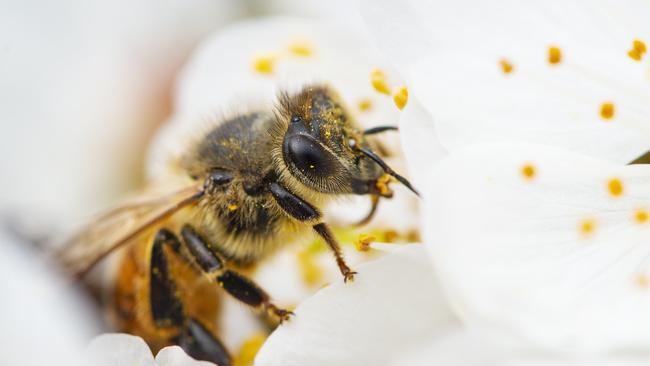
Some of the world’s biggest food companies have signed up to the One Planet Business for Biodiversity movement.
It pledges to bring an end to monoculture farming, which has heavily affected biodiversity, bees and insects, soil fertility and animal life in Europe.
This is driving complementary cropping, when commercial seeders sow two or three crops in wide alternate rows – such as wheat next to nitrogen-producing lucerne or faba beans, or even native grasses.
“It’s a major global trend amongst the big food corporations; part of, but slightly different to, the circular farming trend,” says van Delden.
“Companies are saying they no longer want to be linked to farms, or buy products from them, that sow corn or soybean as far as the eye can see; they are saying it’s better for us, biodiversity and the planet if we encourage the planting of complementary crops next to each other.”
Urban, vertical and soil-free farming
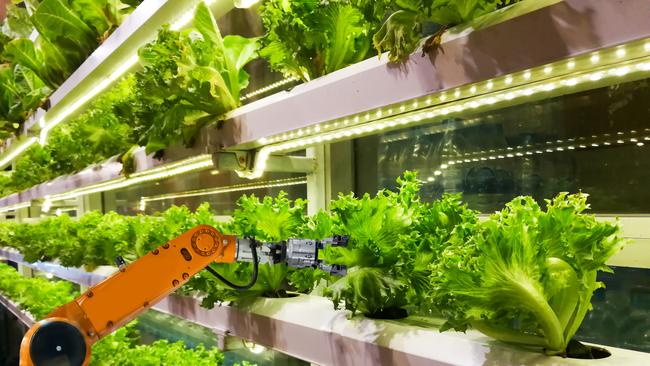
With the global coronavirus pandemic reminding governments of the importance of local food production and food security, get ready for a boom in urban farming.
For example, the Singapore Government has just announced it wants to reduce its 90 per cent reliance on food imports and produce a third of its own food by 2030.
For a tiny highly-populated island of 5.6 million people this means converting skyscraper roofs, office blocks, underground basements and multistorey carparks into vertical soil-free farms, growing everything from hydroponic leafy greens, tomatoes and mushrooms, to pigs, chickens and bees. Other nations are set to follow suit.
“We are seeing huge growth in controlled farming systems - some of it will be big greenhouses out in the country to reduce climate and weather risk, but some will be vertical farms in the heart of the big cities and be all about greater local self-sufficiency and food safety,” says van Delden.
Fewer livestock
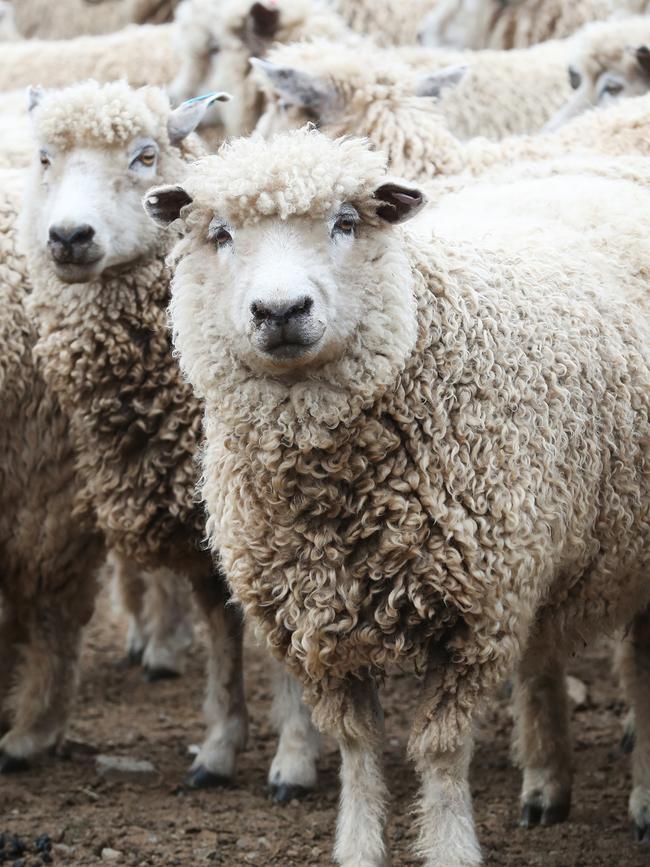
Are animals even necessary anymore, in the new zero low carbon future, ponders van Delden? He predicts a big shift in the number and scale of cattle, sheep and pigs farmed in the future, in favour of horticulture and cropping, driven by the triple global trends of the greater preference and affordability of plant proteins and plant-based meats, consumer concern about the high methane emissions of livestock production, and greater competition for land use.
“As we start talking more about carbon sequestration, growing high-value crops to be made into alternative plant “meat” and paying farmers for soil carbon and biodiversity credits, it will be interesting to see if sheep and cattle can fit in with this,” says van Delden.
“At the end of the day, a hectare of farmland will be put to its highest use, and investors in agriculture will have to ask themselves if animals can still deliver that?”
Carbon and soil farming

Agriculture is in the box seat globally when it comes to serious carbon sequestration – “farming and forestry is the only industry that can truly make a difference”, says van Delden – and Australia has more than 3.8 million square kilometres of its land mass (50 per cent) that is farmed where soil carbon levels can be potentially increased.
Technology, particularly in the form of better measuring and sensor readings of soil carbon levels and new techniques to build soil microbe and fungal activity, will quickly turn this capacity into reality.
“We’re in the relatively early stages but the financial industry wants to invest in this and already the big corporate agricultural players such as Macquarie Agriculture are doing baseline soil carbon measurements across all their farms; it fits in with their commitment to Environmental, Social and Governance reporting but they also believe that up to half of their farm revenue in the future may come from carbon and biodiversity payments,” says van Delden.
“As long as we can accurately authenticate that carbon storage is actually occurring, the double benefit is that the more carbon stored not only might help address climate change but it enriches the soil, and increases soil fertility, so we are also doing future generations of Australian farmers a big favour.”


